Navigating the World of Medical Hosiery: Understanding Compression Stockings,Support Hose and TED stocking
Explore the differences between compression stockings, support hose, and TED stockings in this guide. Understand their purposes, from improving blood flow and preventing venous disorders to aiding recovery in non-ambulatory patients. Make informed choices for optimal leg health.
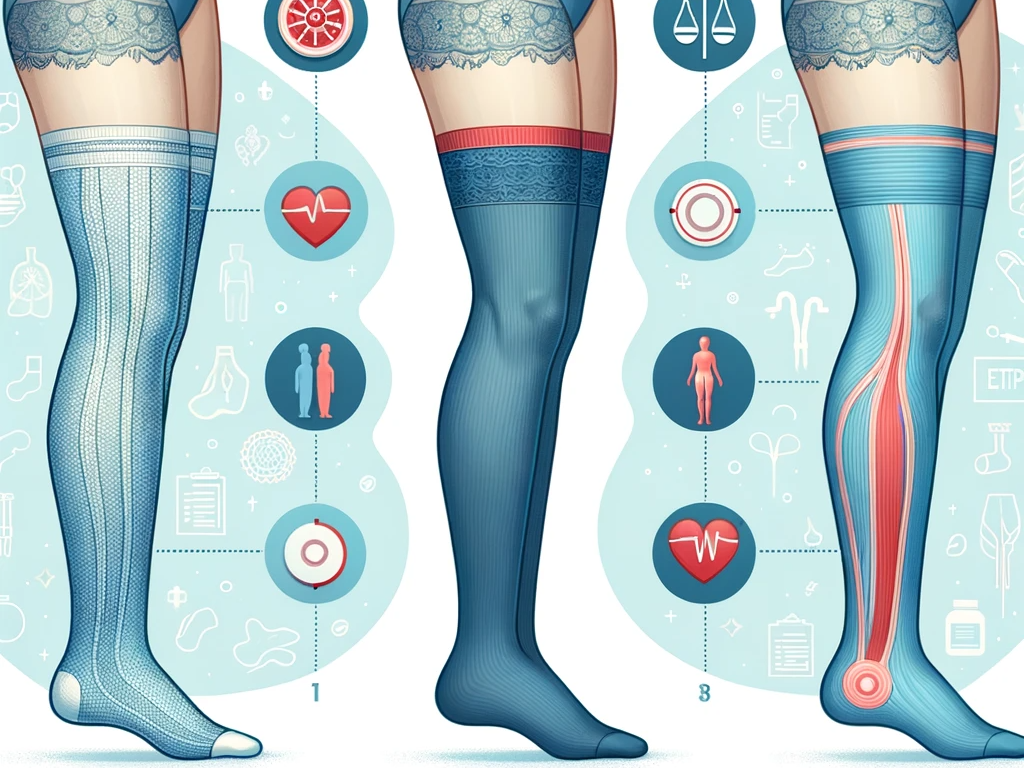
I have a question. My cardiologist ordered compression stockings. They are for venous insufficiency.
What would be the difference if I wear those or, say, Leggs support hose?
I ask because the compression stockings are so expensive compared to the support hose.
Thanks in advance,
Eleana
Dear Eleana,
Thank you for a great question. There is often confusion about the difference between compression hose, support stockings, and TED hose.
When exploring the realm of medical hosiery, it's essential to understand the distinctions and applications of support socks versus compression socks, as well as other related garments. These products play a pivotal role in managing conditions like chronic venous insufficiency, varicose veins, and in preventing deep vein thrombosis (DVT).
I have included a short video and additional information for you to review as time allows.
Warm Regards,
Diane Carbo RN
Caring for a loved one can be overwhelming — but you're not alone. If you have questions, big or small, our expert team is here to help.
👉 Click here to Ask the Expert
A brief video on the comparisons of compression hose and TED hose
Compression Stockings and Socks: Specialized Medical Garments for Optimal Circulatory Health
Compression stockings and socks are a cornerstone in the management of various circulatory and venous conditions. These garments are specifically engineered to deliver gradient compression, which is a critical feature differentiating them from ordinary hosiery or support socks. Gradient compression means that the tightness of the stocking is greatest at the lower leg, near the ankle, and gradually decreases as it moves up the leg. This design is instrumental in promoting healthier blood flow, thereby reducing the risk of blood clots and aiding in the management of chronic venous disorders.
Key Advantages and Medical Applications
Preventing Deep Vein Thrombosis (DVT):
By improving blood circulation, compression stockings are effective in preventing DVT and help prevent blood clots, a condition where blood clots form in the deeper veins of the legs. This is particularly crucial for bedridden patients, post-surgical cases, or individuals with a history of venous thrombosis.
Management of Chronic Venous Insufficiency and Varicose Veins:
For those suffering from chronic venous insufficiency or varicose veins, wearing compression socks can provide significant relief. The pressure applied by these stockings aids in reducing the diameter of distended veins, thereby improving valve effectiveness and reducing venous pressure.
Post-Thrombotic Syndrome:
Patients recovering from blood clots often experience post-thrombotic syndrome, which can lead to swelling, pain, and skin changes in the affected limb. Compression therapy through stockings can alleviate these symptoms and prevent further complications.
Lymphatic and Circulatory Support:
By enhancing blood flow and reducing venous pressure, these garments also support the lymphatic system, which is essential for maintaining fluid balance and preventing edema in the lower legs.
Choosing the Right Compression Level and Type
Therapeutic compression stockings come in various compression levels, typically measured in millimeters of mercury (mmHg). These range from mild compression (which might be suitable for individuals who stand for long periods or have mild swelling) to medical-grade compression, which is used for more severe venous disorders. It’s crucial to choose the right level of compression, as too much pressure can be uncomfortable and potentially harmful, while too little may not be effective. Often, a healthcare provider or a specialist at a medical supply store will recommend the appropriate compression level based on the medical condition and individual needs.
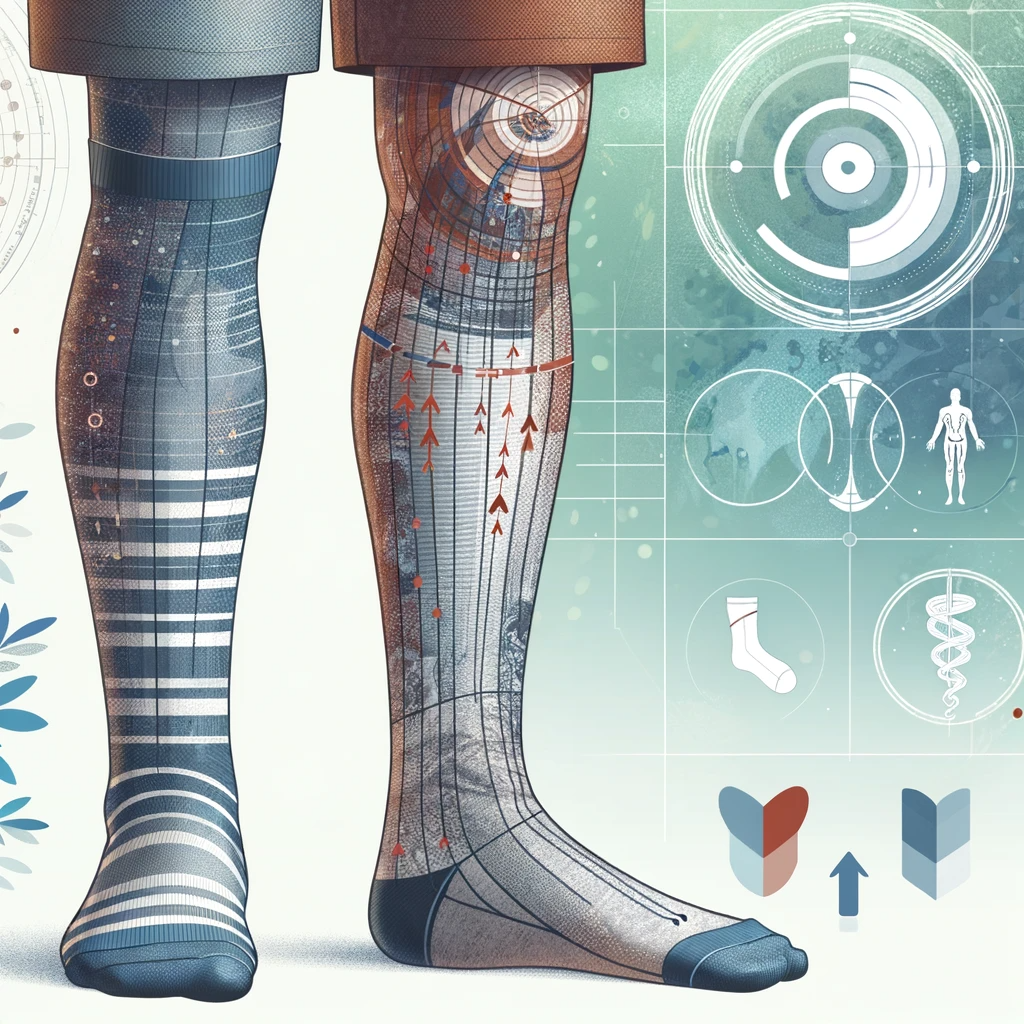
Compression Stockings and Socks as specialized medical garments
Material Composition and Wearing Comfort
Modern compression stockings are made from a variety of materials, offering flexibility, breathability, and comfort for everyday wear. They are designed to feel snug but not painfully tight, ensuring effective compression without compromising on comfort. Additionally, these garments come in different styles, such as knee-high or thigh-high, catering to the specific needs and preferences of the wearer.
Ensuring Safe and Effective Use
For individuals with conditions like severe edema, venous ulcers, or those at risk of pulmonary embolism, it's imperative to consult a doctor before using compression stockings. A doctor's prescription ensures that the right type of compression garment is used, and that it fits properly to provide therapeutic benefits without causing harm.
In summary, compression stockings and socks represent a vital component in the management and prevention of various medical conditions associated with the circulatory and venous systems. Their ability to provide graduated compression makes them effective in improving blood circulation, preventing blood clots, and alleviating symptoms associated with chronic venous disorders. Whether for medical use or for comfort during long periods of standing or sitting, selecting the right type, compression level, and fit of these garments is key to achieving optimal circulatory health.
Support Hose: Enhancing Comfort and Circulation with Mild Compression
Support hose, distinct from medical-grade compression stockings, are designed to provide mild compression, making them an ideal choice for individuals who experience discomfort from prolonged periods of standing or sitting. Unlike graduated compression stockings, which are tailored for specific medical conditions, support hose are geared towards everyday wear and general comfort.
Benefits and Use Cases of Support Hose
Improved Circulation for Long Periods of Standing or Sitting:
People in professions that require extended periods of standing or sitting, such as retail workers, office employees, or flight attendants, find support hose beneficial. They help in maintaining steady blood flow and reducing the feeling of heavy legs.
Prevention of Spider Veins and Mild Edema:
Regular wear of support hose can aid in preventing the onset of spider veins and mild edema. By applying gentle pressure to the legs, they help in mitigating the risk of circulatory problems that can lead to these conditions.
Reduced Swelling and Discomfort:
For individuals experiencing mild swelling or discomfort in the lower legs, support hose can offer relief. They provide a snug fit that supports the veins and improves circulation, thereby reducing swelling and the feeling of tired legs.
Understanding the Differences: Support Hose vs. Compression Socks
While support hose and compression socks may seem similar, they serve different purposes. Support hose offer a uniform level of mild compression and are generally safe for everyday wear without a prescription. Compression socks, including medical compression stockings and graduated compression socks, are designed for more specific medical needs, such as managing chronic venous insufficiency, preventing deep vein thrombosis (DVT), and supporting the circulatory system in various venous disorders.
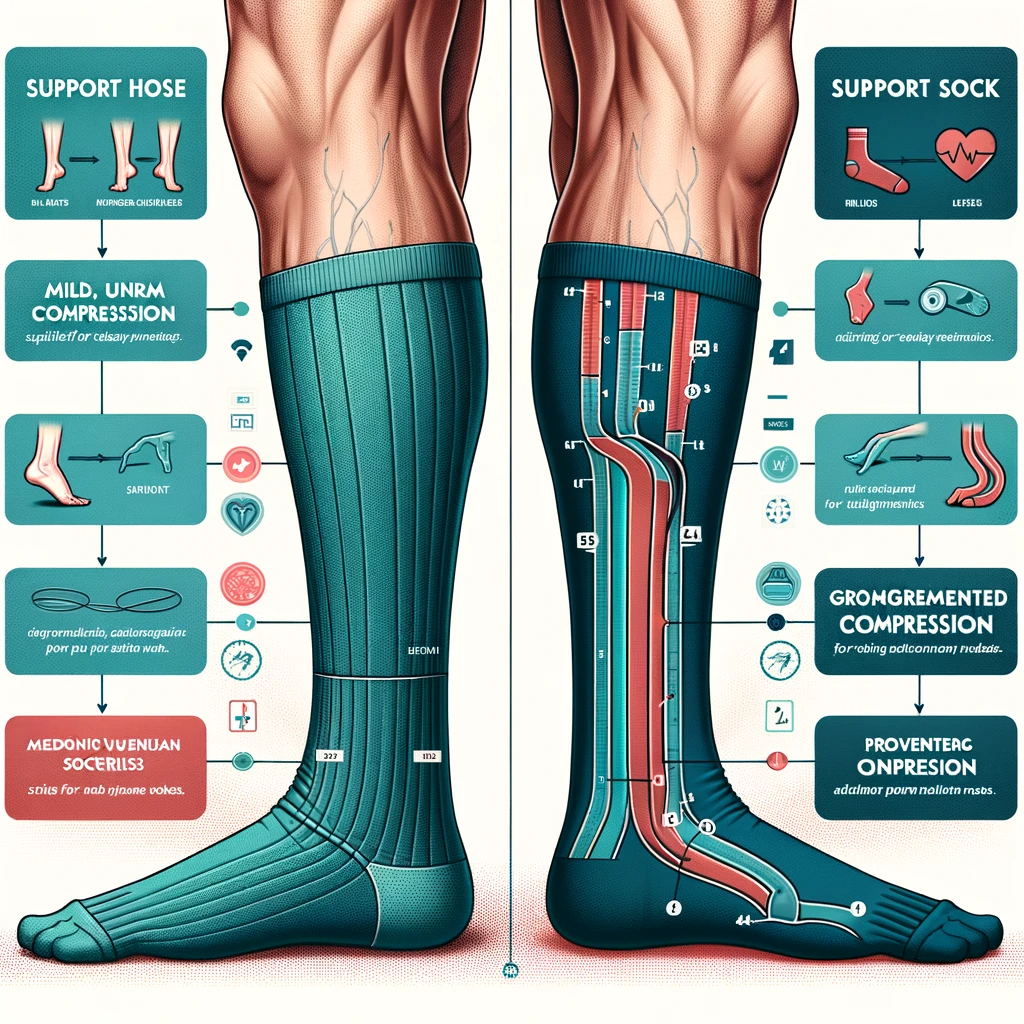
Do you wear compression socks or compression stocking ?
Material Composition and Comfort
The material composition of support hose is tailored for comfort and ease of use. They are usually made from soft, breathable fabrics that feel snug but not painfully tight, ensuring comfort throughout the day. They come in various styles, such as knee-high or thigh-high, and can be found at most medical supply stores or over the counter.
Who Should Wear Support Hose?
Support hose are particularly beneficial for individuals who have not been diagnosed with a specific venous condition but experience discomfort due to prolonged standing or sitting. They are also suitable for those looking to prevent potential circulatory problems like spider veins or for those seeking a gentle compression option to alleviate the discomfort of heavy, tired legs.
In summary, support hose are a practical solution for those seeking mild compression for improved circulation and comfort during long periods of inactivity or standing. They differ from medical-grade compression garments in terms of compression levels and intended use. While they are generally safe for everyday wear, it's always advisable to consult with a healthcare provider if you have underlying medical conditions or if you're unsure about the right type of compression garment for your needs.
TED Hose and Anti-Embolism Stockings: Specialized Care for Non-Ambulatory Patients
Anti embolism socks and TED hose are critical in the preventive care regimen for non-ambulatory or bedridden patients, particularly those at risk for deep vein thrombosis (DVT) and pulmonary embolism. These conditions are significant concerns in patients with limited mobility, and the right compression therapy plays a vital role in mitigating these risks.
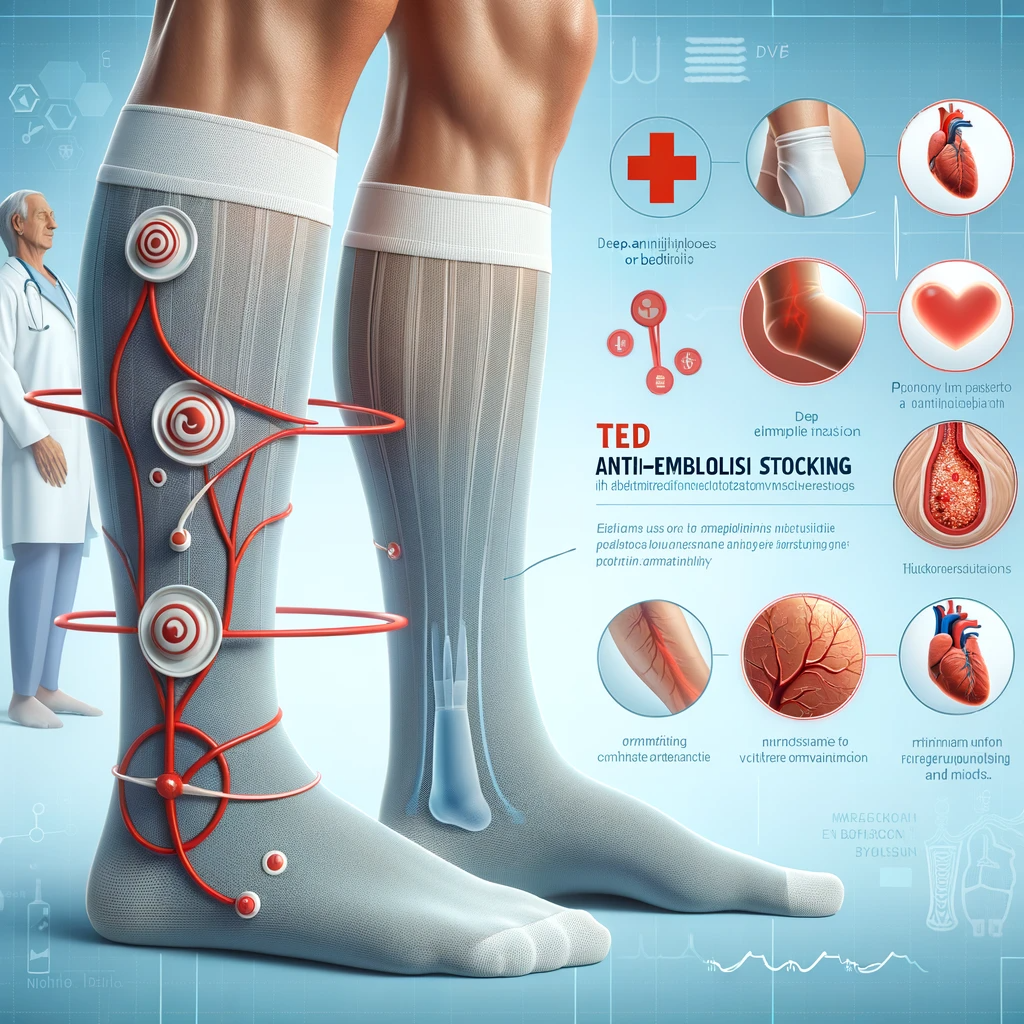
Medical Compression stockings
Design and Functionality of TED Hose and Anti-Embolism Stockings
Targeted Compression Levels:
Unlike standard compression stockings or socks, which offer graduated compression for various medical conditions, TED hose and anti-embolism stockings provide a uniform compression level. This level is typically lower than that of medical compression stockings, designed to ensure safe and effective blood circulation in patients with limited mobility.
Preventing Blood Clots in Non-Ambulatory Patients:
The primary purpose of these stockings is to prevent blood clot formation in patients who are bedridden or immobile for long periods, such as post-surgical patients who need to wear TED hose. By applying gentle pressure to the legs, they reduce the risk of blood pooling and clot formation, which are precursors to DVT and pulmonary embolism.
Material Composition and Wearing Comfort:
These stockings are made from materials that ensure comfort for prolonged wear, especially important for bedridden patients. They are designed to feel snug yet comfortable, reducing the risk of skin irritation or pressure sores that can occur from prolonged use.
Putting the hose on is challenging. Here's a video for you
Comparative Overview: TED Hose vs. Compression Stockings in Medical Therapy
TED hose and regular compression stockings, while similar in appearance and basic function, are designed for distinctly different purposes in the realm of medical therapy. Understanding these differences is crucial for patients and caregivers to choose the appropriate garment for specific health conditions.
TED Hose and Anti-Embolism Stockings: Specialized for Non-Ambulatory Patients
TED hose, along with anti-embolism stockings, are primarily recommended for non-ambulatory patients. These include individuals who are bedridden or have severely limited mobility, often due to surgery, severe illness, or other conditions leading to prolonged immobility.
Purpose:
The primary function of TED hose and anti-embolism stockings is to maintain healthy blood circulation and prevent venous disorders such as deep vein thrombosis (DVT) and pulmonary embolism, which are significant risks for patients with limited mobility.
Compression Levels:
These stockings typically apply a uniform and milder level of compression compared to graduated compression stockings. This consistent pressure is designed to aid in blood flow without exerting excessive force, which is essential for patients who are not mobile.
Material and Design:
The design and material composition of TED hose are tailored to be comfortable for long periods of wear, especially important for bedridden or non-ambulatory patients. They are generally safe and do not usually cause discomfort or restrict circulation when fitted correctly.
Compression Stockings: Targeted for Active Patients with Venous Disorders
On the other hand, medical-grade compression stockings are designed for active individuals experiencing various venous disorders.
Medical Conditions:
These include chronic venous insufficiency, varicose veins, post-thrombotic syndrome, and those in recovery from DVT. They are also used by individuals who experience heavy legs, lactic acid build-up, or tired legs due to poor circulation.
Graduated Compression:
Unlike TED hose, medical compression stockings often feature graduated compression. This means the compression level is highest at the lower leg and gradually decreases towards the upper part of the garment. This design is crucial in helping propel blood back towards the heart, improving overall circulation and reducing swelling.
Prescription and Customization:
They come in various compression levels, from mild to firm compression, and are typically prescribed by a doctor. The prescription is based on the specific needs of the patient, considering factors like blood pressure, severity of venous disorder, and individual measurements for a snug fit.
Variety in Styles:
These stockings are available in different styles, including knee-high, thigh-high, and pantyhose, catering to the specific needs and preferences of the wearer.
Choosing the Right Compression Garment
When selecting between TED hose and compression stockings, it is essential to consider the individual's mobility level, the specific venous condition, and the doctor's recommendation. For active patients with venous disorders, medical-grade compression stockings are often the right choice. In contrast, for bedridden or non-ambulatory patients, TED hose or anti-embolism stockings are generally more appropriate.
Both types of garments are available at medical supply stores and can sometimes be found over the counter. However, for medical-grade compression stockings, a doctor's prescription is often required to ensure the right level of compression and proper fit, thereby maximizing therapeutic effectiveness and comfort.
Guidance on Use and Selection
It's essential for healthcare providers or specialists at medical supply stores to guide the selection and fitting of TED hose and anti-embolism stockings. Correct sizing and appropriate compression level are crucial to ensure these garments are effective and comfortable. Over-the-counter options are available, but consulting a healthcare professional is advisable, especially for patients with specific medical conditions or those recovering from surgery.
TED hose and anti-embolism stockings represent an essential aspect of compression therapy, particularly for patients with reduced mobility. Their role in preventing serious complications like DVT and pulmonary embolism in non-ambulatory patients underscores the importance of selecting the right compression garment for each individual's needs. Whether for post-surgical recovery or prolonged bed rest, these stockings provide a critical solution for maintaining blood flow and preventing the complications associated with immobility.
Compression Therapy: A Holistic Approach
Compression therapy, encompassing all these garments, plays a crucial role in managing venous disorders and improving blood circulation. This therapy is vital for patients with severe edema, venous ulcers, and those at risk of blood clots. The right compression level and garment type (whether thigh-high, knee-high, or pantyhose) depend on the individual's medical condition and lifestyle.
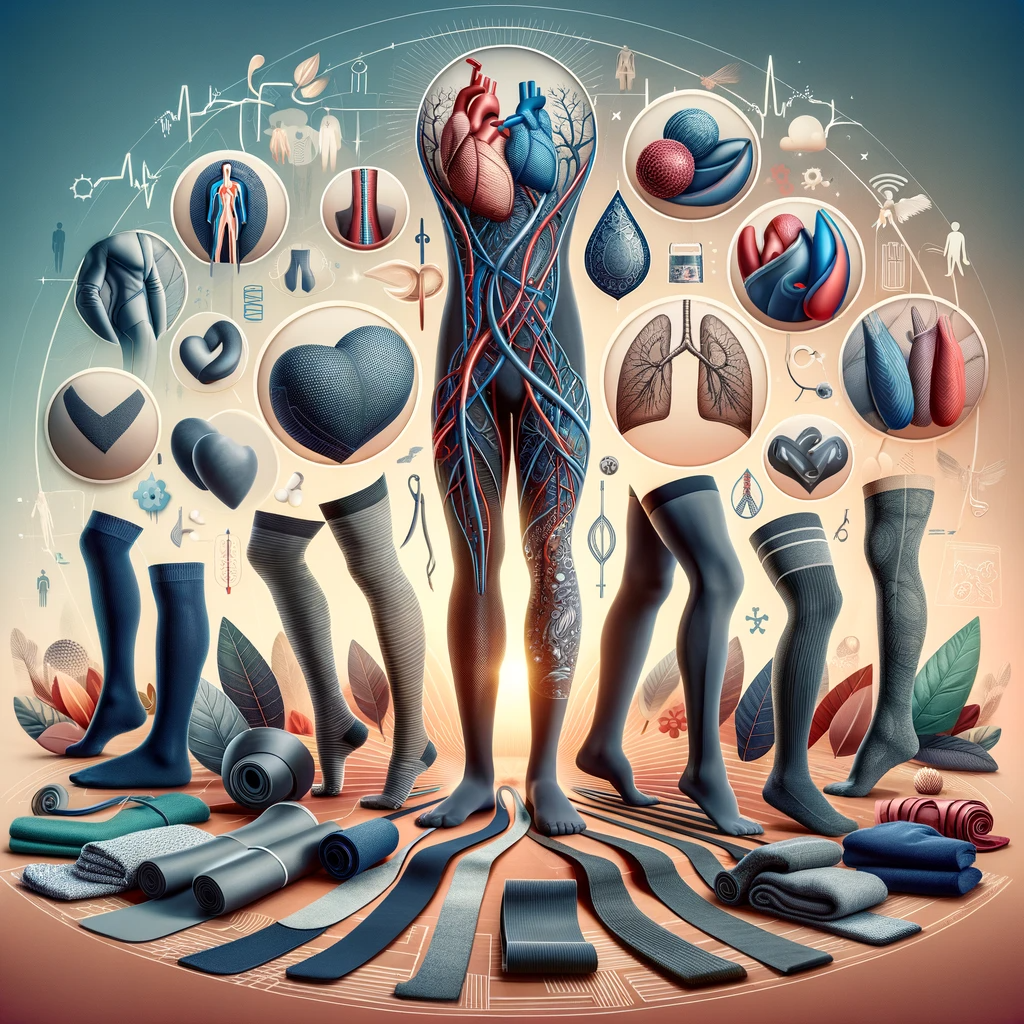
Choosing the right compression garment for you.
Choosing the Right Compression Garment
When choosing a compression garment, whether it's for chronic venous insufficiency, lymphatic system issues, or just to reduce swelling in the lower legs, it's important to consult a healthcare provider. They can prescribe the right compression level and type of garment, whether it's firm compression stockings for medical conditions or support socks for everyday wear. These garments are available at medical supply stores and sometimes over the counter.
In conclusion, whether you're considering wearing compression socks to alleviate symptoms of tired legs, seeking medical compression stockings for a specific venous condition, or need support hose for prolonged periods of standing or sitting, understanding the differences in compression levels, material composition, and intended use is crucial. Always consult a healthcare professional to ensure you choose the right compression for your needs, ensuring healthy circulation and the prevention of circulatory problems.





